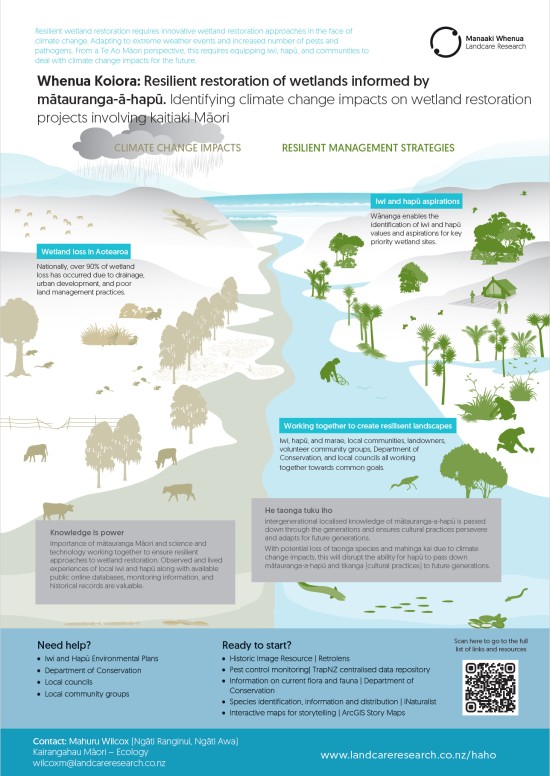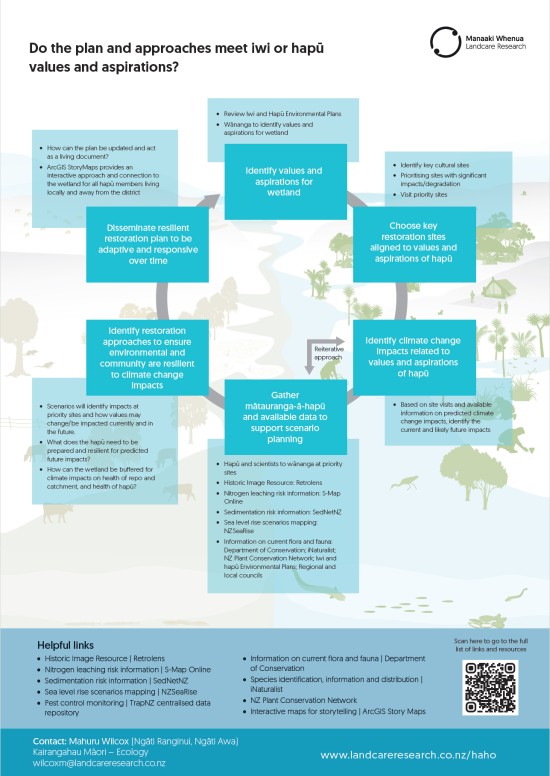- Home
- ...
- Action on climate change
- Huringa Āhuarangi, Huringa Oranga: Changing environment, changing wellbeing
Whenua Koiora: Resilient restoration of wetlands, informed by mātauranga-ā-hapū
In this section
Extreme weather events are predicted to increase in frequency and intensity across Aotearoa New Zealand, which could lead to changes in hydrology, effects of mahinga kai (food gathering) species and breeding habitat, and increased number of pests and pathogens in remaining wetland ecosystems throughout the country.
In Aotearoa, more than 90% of wetlands have been destroyed due to human impacts. For Māori, wetlands are of cultural, historical, economical, and spiritual significance. Wetlands provide significant habitats for a range of taonga (culturally significant) native plant and animal species, containing valuable mahinga kai sites and cultural resources for customary practices such as rongoā Māori (medicine) and raranga (weaving).
Whenua Koiora works in partnership with Ngāti Whakamarurangi hapū to develop a resilient wetland restoration plan for the Toreparu Wetland, West Coast, Waikato Region. Resilient restoration considers the restoration of natural habitats in the face of climate change and seeks to empower Māori communities with adaptive strategies to deal with these climate change impacts. This approach requires mātauranga-ā-hapū (local hapū knowledge) and available science to take a holistic approach to resilient restoration.
The Toreparu Wetland Restoration StoryMap uses a multidisciplinary approach to wetland restoration in a changing climate, founded on mātauranga-ā-hapū. The StoryMap combines local historical knowledge, hapū aspirations for restoration, and future climate change scenarios to highlight restoration approaches of key priority sites. Resilient restoration of Toreparu Wetland needs to include wetland biodiversity and the strengthening of hapū knowledge and connection, to ensure a resilient future for many generations to come.
Process diagram resources
- pdf Process diagram: Do the plan and approaches meet iwi or hapu values and aspirations pdf File, 825 KB
- Nitrogen leaching risk information | S-Map Online Link
- Sedimentation risk information | SedNetNZ Link
- Sea level rise scenarios mapping | NZSeaRise Link
- Information on wetland flora and fauna | DoC Link
- Species identification, information and distribution | iNaturalist Link
- NZ Plant Conservation Network Link
- Interactive maps for storytelling | ArcGIS Story Maps Link


